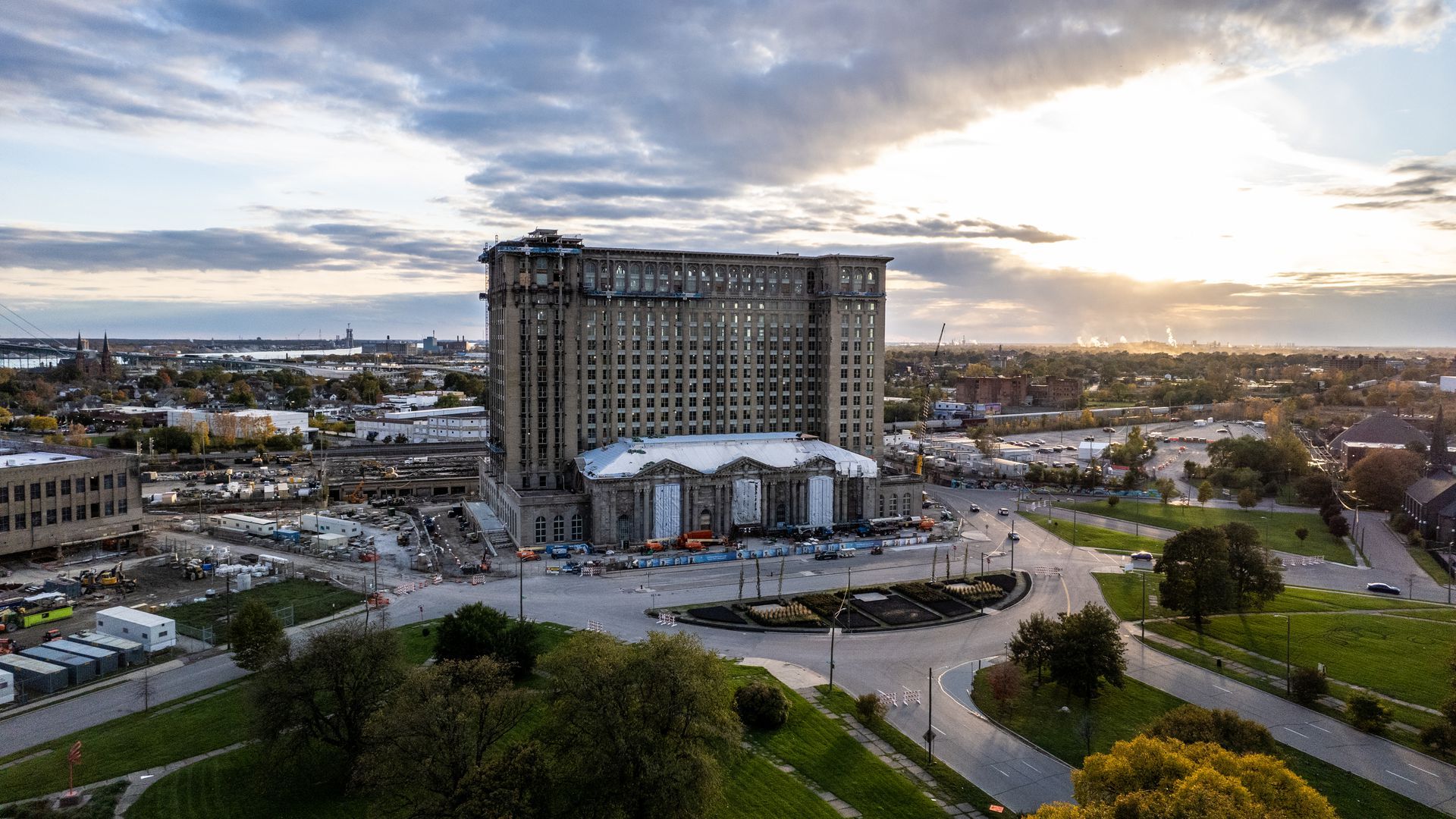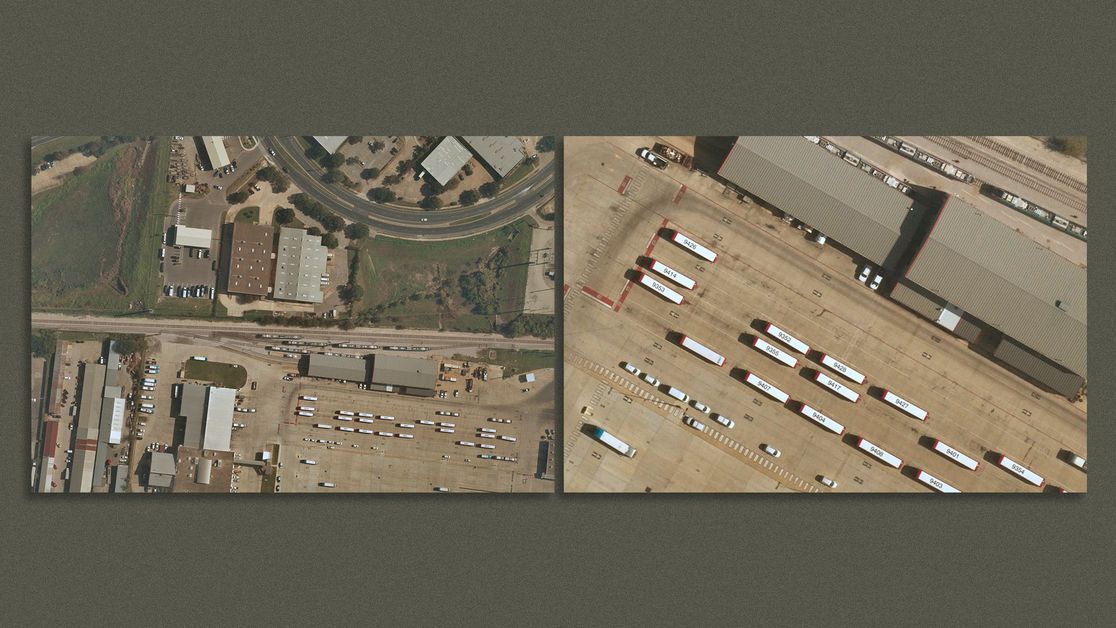| | | | | | | | | | | Axios What's Next | | By Jennifer A. Kingson, Joann Muller and Erica Pandey ·Feb 04, 2022 | | Thanks for the feedback on yesterday's newsletter! - Michael Esser, an avid runner, wrote in response to Joann Muller's piece on self-driving cars, saying he's been "stalked" on early-morning runs by "what appeared to be Waymo cars."
- "The cars obviously 'saw' me running on the street ahead of them," he said.
- "Every reasonable human driver would have had multiple opportunities to get past me" but "the Waymos obviously 'thought' that this was too much of a risk and stayed behind me."
- These encounters "tell you that we are years away from any sensical deployment," he concludes.
Got thoughts on today's issue? Email us at whatsnext@axios.com. Today's Smart Brevity count: 1,178 words ... 4.5 minutes. | | | | | | 1 big thing: America's bridges are falling apart faster than expected |  Roughly a third of the nation's 620,000 bridges — 36% — need major repair work or replacement, Jennifer A. Kingson writes, based on a new report. Why it matters: Deferred maintenance, climate change and heavier-than-anticipated traffic are causing bridges to wear out earlier than expected, and engineers say not enough is being done to keep drivers safe. Driving the news: More than 43,500 U.S. bridges are in poor enough condition to be deemed "structurally deficient," according to the new report by the American Road & Transportation Builders Association. - Those bridges are crossed 167.5 million times a day.
- Chunks of concrete fall from bridges with some regularity, and routine inspections often reveal problems that prompt authorities to shut down lanes of traffic or close off a bridge to heavy vehicles, to reduce the weight burden.
- A bridge collapse last week in Pittsburgh — on the same day President Biden visited the city to talk about infrastructure — highlighted the problem, but engineers say it's a bigger issue than many Americans may realize.
At the current rate, it would take 30 years to fix all of America's structurally deficient bridges. What's happening: Historic sums are about to be spent on bridge repair — more than $26.5 billion over five years — under Biden's infrastructure law, the Department of Transportation announced in January. - Transportation Secretary Pete Buttigieg called it "the single largest dedicated bridge investment since the construction of the Interstate highway system."
The intrigue: Many bridges were built after World War II and meant to last 100 years. But they're falling apart ahead of schedule, due to combinations of extreme weather, massive growth of vehicle traffic, deferred maintenance and a lack of coordinated oversight. What's next: It's time to deploy new technology to the old-world practices of bridge inspection and maintenance, says Matti Kuivalainen the CEO of Dywidag, one of the world's leading bridge engineering firms. - That means the widespread installation of sensors that can help predict problems — which is happening in Europe but not the U.S., Kuivalainen said.
Share this story |     | | | | | | 2. New service will offer ultra-high resolution Earth images |  | | | Illustration: Aïda Amer/Axios | | | | A Brooklyn-based Earth-observing company called Near Space Labs is making images of the U.S. available at an ultra-high, 10-centimeter resolution for commercial use beginning this week, Andrew Freedman writes in Axios Generate. Why it matters: The new optical imagery has many uses relevant to climate and energy interests: - Energy companies can monitor their operations, including pipelines and other infrastructure.
- The insurance industry can use it to conduct quick damage assessments after extreme weather and climate events.
- First responders can track floods and wildfires.
- Environmental groups can keep tabs on environmental threats such as habitat destruction, or watch over industrial operations.
The big picture: This makes Near Space Labs the only company to offer imagery this detailed on the commercial market right now. - One other company, Albedo, is planning to offer imagery at this resolution via satellites in 2023 or 2024. (Most satellites whose imagery is commonly shared in the media, for example, have 30-cm resolution.)
- In images with the new, higher resolution, one can pick out a soccer ball in a field.
Images of a bus station in 10-cm resolution. (Near Space Labs) Read the full story |     | | | | | | 3. Google, Ford team up on mobility research, job training in Detroit |  | | | Detroit's iconic Michigan Central train station is undergoing renovation as a new 30-acre mobility tech hub. Photo: Ford | | | | Google is joining Ford Motor in an ambitious urban renewal initiative to create a transportation research hub in Detroit and build the skilled workforce needed to bring advanced mobility ideas to life, Joann writes. Why it matters: Companies are struggling to fill tech jobs with qualified applicants, and many are deciding it's easier to hire unskilled workers and provide them with the necessary digital training. What's happening: Google is joining Ford as a founding member of Michigan Central, a 30-acre, mobility-focused innovation district housed in the city's iconic abandoned train station and the surrounding neighborhood. - Michigan Central will serve as a focal point for the development of electric and autonomous vehicles, along with new forms of micromobility.
- It will feature the nation's first stretch of road to wirelessly charge electric vehicles while they're in motion.
Google will focus on training and educating Detroiters for the types of jobs required by the future transportation ecosystem. - The company will open a Code Next Lab at Michigan Central to teach computer science to Detroit high schoolers.
- And it will partner with local nonprofits to offer basic tech skills through its three- to six-month Google Career Certificates program.
Read the rest |     | | | | | | A message from Axios | | More than news—it's your competitive edge | | |  | | | | Axios Pro is created for your profession, equipping you with only the most relevant information for your job. What you'll get: Daily premium newsletters, exclusive scoops, live reporter discussions and Pros-only event invitations. Register for free | | | | | | 4. Desperate Sarasota County asks parents to teach |  | | | Illustration: Allie Carl/Axios | | | | The chaos caused by the Omicron variant has so depleted public school personnel that at least one local district is turning to a new demographic to lead classrooms: parents, Ben Montgomery writes in Axios Tampa Bay. Why it matters: Personnel shortages at schools across the U.S. have district officials thinking outside the box to staff classrooms, cafeterias and buses. Driving the news: Sarasota schools spokesperson Kelsey Whealy tells Axios the district has been advertising for subs and full-time personnel since the beginning of the year. The recent appeal emailed to parents was just the latest step. - "If you normally volunteer in our schools or if you have time available, please consider working as a substitute in our district," the email said.
- It also listed rates of pay for various substitute positions, ranging from $105.68 per day for subs with a high school diploma to $152.09 per day for those with a master's degree.
What they're saying: "We've been in need of a little over 300 subs on most days since the return from winter break," Whealy tells Axios. "Pre-pandemic, our needs wouldn't usually exceed the 200s." Read the rest |     | | | | | | 5. 1 📦 thing: Stolen from porches |  | | | Illustration: Sarah Grillo/Axios | | | | Staggering stat: An estimated 210 million packages were stolen from front porches, apartment lobbies and stoops in 2021, the New York Post reports. Why it matters: The pandemic accelerated the rise of e-commerce, but more online shopping means more opportunities for theft. One solution that has taken off in Europe and Asia but has been slow to catch on in the U.S. is secure lockers, per Retail Brew. They virtually eliminate theft. - In Japan, there are tens of thousands of high-tech lockers that can be opened with an app or a QR code. They're located in apartment building lobbies, at convenience stores, at train stations and even in gyms.
- In the U.S., there aren't enough of these lockers to make them a convenient option, and when they do exist, they're not universal. For example, only Amazon can deliver to Amazon lockers.
What to watch: Lockers may finally come to the U.S. as the volume of online shopping keeps growing. |     | | | | | | A message from Axios | | More than news—it's your competitive edge | | |  | | | | Axios Pro is created for your profession, equipping you with only the most relevant information for your job. What you'll get: Daily premium newsletters, exclusive scoops, live reporter discussions and Pros-only event invitations. Register for free | | | | Was this email forwarded to you? Get your daily dose of What's Next magic by signing up for our free newsletter here. |  | Bring the strength of Smart Brevity® to your team — more effective communications, powered by Axios HQ. | | | | | | Axios thanks our partners for supporting our newsletters. If you're interested in advertising, learn more here.
Sponsorship has no influence on editorial content. Axios, 3100 Clarendon Blvd, Suite 1300, Arlington VA 22201 | | | You received this email because you signed up for newsletters from Axios.
Change your preferences or unsubscribe here. | | | Was this email forwarded to you?
Sign up now to get Axios in your inbox. | | | | Follow Axios on social media:    | | | | | |











No comments:
Post a Comment